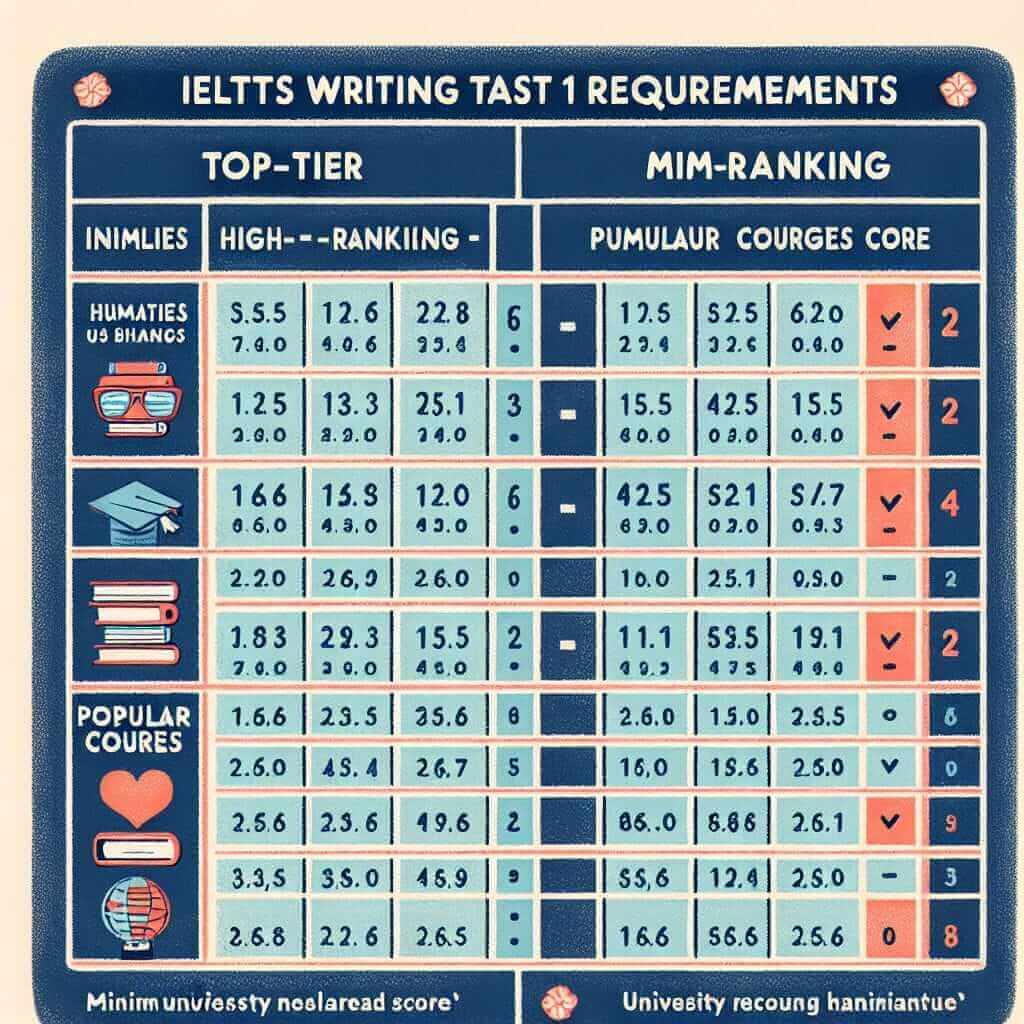For those aspiring to study in the UK, achieving a good IELTS score is often a key requirement of the application process. But unlike the overall IELTS band score requirement, which is fairly standard, the specific band score requirement for IELTS Writing Task 1 can vary significantly depending on the university and course of study. This article will delve into the intricacies of IELTS Writing Task 1 band score expectations for UK universities, equipping you with the knowledge to approach this section with confidence.
Understanding IELTS Writing Task 1
In the IELTS Academic Writing test, Task 1 requires you to write a minimum of 150 words summarizing, describing, or explaining visual information presented in the form of a graph, chart, table, diagram, or process. Your ability to accurately and coherently present the key features and trends in the visual data is assessed.
IELTS Writing Task 1 Band Score Requirements for UK Universities
While there is no universal band score for Writing Task 1 across all UK universities, a score of 6.0 or 6.5 is generally considered the minimum for many undergraduate and postgraduate programs. However, this can change based on a few key factors:
1. University Ranking:
-
Higher-ranked universities: Top-tier institutions like the University of Oxford, University of Cambridge, Imperial College London, etc., often demand higher IELTS scores, with 7.0 or even 7.5 being common for Writing Task 1. This reflects the rigorous academic standards and the need for excellent analytical and writing skills.
-
Mid-range and lower-ranked universities: These institutions may have more flexible entry requirements, with some accepting a 6.0 or 6.5 in Writing Task 1.
2. Course Type:
-
Humanities and Social Sciences: Courses in these fields often place a strong emphasis on writing and analytical skills. Therefore, a higher IELTS Writing Task 1 score might be expected compared to some science and technology programs.
-
Science, Technology, Engineering, and Mathematics (STEM): While strong English language proficiency is still crucial for STEM courses, the emphasis on Writing Task 1 might be slightly less than in humanities subjects.
Example: A student applying for a Master’s in English Literature at the University of Edinburgh might need an overall IELTS score of 7.0 with a minimum of 7.0 in Writing Task 1. Conversely, an applicant for an Engineering program at the University of Manchester might be required to achieve an overall IELTS score of 6.5 with a minimum of 6.0 in Writing Task 1.
Always Check Specific Requirements
It’s crucial to remember that these are general guidelines. Always visit the university’s official website or contact the admissions department directly to confirm the exact IELTS requirements for your chosen course.
Illustrative Examples of IELTS Writing Task 1 Requirements:
- University of Oxford (Top-Tier): MPhil in Economics: Overall IELTS: 7.5 (with at least 7.0 in each component, including Writing Task 1).
- University of Warwick (High-Ranking): MSc in Management: Overall IELTS: 7.0 (with a minimum of 6.5 in each component, including Writing Task 1).
- University of Leeds (Mid-Range): BA in History: Overall IELTS: 6.5 (with a minimum of 6.0 in each component, including Writing Task 1).

Common Mistakes to Avoid in IELTS Writing Task 1
-
Misinterpreting Data: Accurately understanding and representing the visual information is paramount. Pay close attention to units of measurement, axes labels, and trends.
-
Lack of Overview: Always include a brief overview summarizing the main trends or features of the data.
-
Insufficient Detail: Provide specific details and data points to support your statements. Avoid being overly general.
-
Poor Organization: Structure your response logically with clear paragraphs, each focusing on a different aspect of the data.
-
Grammatical Errors: Grammatical accuracy is essential. Review your work for common errors like subject-verb agreement, tense consistency, and article usage.
Tips to Enhance Your IELTS Writing Task 1 Score
-
Practice Regularly: Familiarize yourself with various question types and practice writing responses under timed conditions.
-
Analyze Model Answers: Examine high-scoring sample answers to understand the structure, language, and level of detail required.
-
Develop Vocabulary: Enhance your range of vocabulary related to describing trends, comparing data, and expressing proportions.
-
Seek Feedback: Have your writing assessed by an experienced IELTS tutor or teacher to identify areas for improvement.
Conclusion
Achieving your desired IELTS Writing Task 1 score for UK university admission requires careful planning and focused preparation. By understanding the specific requirements of your chosen institution and course, consistently practicing, and refining your writing skills, you can confidently approach this section of the IELTS exam. Good luck!